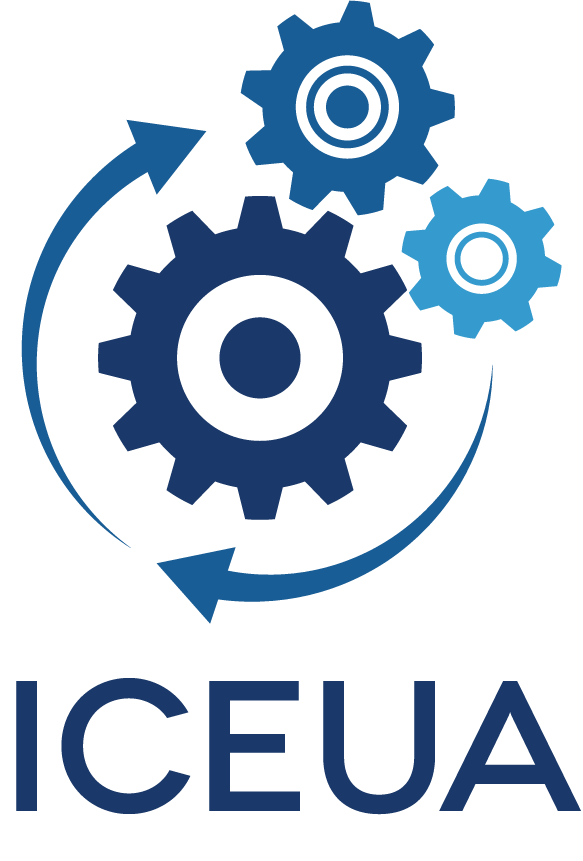
| Keynote Speakers |

Assoc.Prof. Guohua Xie
Wuhan University
Research area: Organic Semiconductors, Organic Photonics, and Organic Optoelectronic Materials and Devices
Title: Solution-Processed Organic Light-Emitting Devices
Abstarct: Organic light-emitting devices (OLEDs) have very promising applications in display, lighting, visible light communication, and medical treatment, which make them attractive in fundamental and applied researches. Currently, the manufacture of OLED panels mainly rely on high-vaccum thermal evaporation, which is very expensive and complicated. To address this issue, solution-processed OLEDs are favorable due to the merits of large-area and low-cost. In this talk, the state-of-the-art spin-coated OLEDs will be presented and explained, includingg material selection and device engineering. In addition, the innovation of transfer printing and inkjet printing for solution-processed OLEDs will be elaborated, which are more competitive for mass production.
————————————————————————————————————————————————————————————————————————————

Assoc.Prof. Muhyiddine Jradi
Center for Energy Informatics, University of Southern Denmark
Research area: Energy efficient systems, Sustainable energy technologies, Energy digitalization, Building management systems, Building energy modelling and simulation, Thermal comfort and indoor air quality, Cogeneration and Tri-generation systems, Energy systems numerical modelling and simulation, HVAC Systems, Energy Storage, Systems control and optimization.
Title: Auditing and Smartness Evaluation of Building Automation and Control Systems
Abstarct:
In future smart communities, buildings must possess energy efficient systems, provide absolute comfort, empower occupants with information, adapt operations to energy grid situations and facilitate strategic maintenance. A key condition to realize these deliverables, is a proper designed and well-equipped building automation and control system (BACS). This talk presents an innovative holistic tool ‘IBACSA’, for BACS assessment and smartness evaluation using a hybrid qualitative-quantitative multi-criteria approach. The tool serves as a comprehensive and user-friendly instrument in a systematic building initial and retro commissioning platform, ensuring a good start-up for newly built and retrofitted energy efficient buildings. First, the talk will highlight the importance of building commissioning and BACS auditing in improving the overall building stock operation and meeting environmental and energy goals. Then, IBACSA design and development will be presented, followed by live demonstration, considering three hospital buildings in Denmark.
————————————————————————————————————————————————————————————————————————————

Prof. Rajan Jose
Faculty of Industrial Sciences & Technology, Universiti Malaysia Pahang
Research area: Renewable Energy Materials & Devices
Title: Energy for 21st Century and Beyond
Abstarct: Widespread industrialization, rapid urbanization, and massive transport through land, waters, and air have led to catastrophes such as climate change, water pollution, resource limitation, and pandemics causing severe economic consequences, massive influences on the natural environment and pose a great threat to the life sustainability. Energy generation and usage are one of the principal contributors of environmental adversity; therefore, radical changes are required to decarbonize the energy sector. Electron and hydrogen economies are widely discussed as sources to lower energy for their potential in lowering the carbon emission. Ironically, while these protocols can potentially reduce emission during operation, processing of materials to fabricate the devices to enable electron and hydrogen economies, such as electrical energy storage devices and fuel cells, are principal contributors of emission. Therefore, the decarbonization of energy sector is unlikely be accomplished without decarbonizing the materials production sector and demand low carbon materials. For example, current rechargeable batteries in two storage modes are commercial, viz. lithium-ion batteries (LIBs) and electrochemical capacitors (ECs; synonymously supercapacitors), with significantly differing performance indicators arising from the differences in their storage mode. Considering sustainability of electrical energy storage devices, ECs are preferred over batteries at least for two reasons. First is that the electrode materials in batteries are earthborn, which are mined and processed as specialty materials, the processing add significant amount of carbon emission. On the other hand, electrode materials of ECs could be sought from biomass; and therefore, are sustainable. Secondly, EC is a non-faradic ion adsorption process, thereby giving chargeability at any voltage. On the other hand, battery storage is via faradic reaction through either alloying or intercalation or redox reactions or their combinations, thereby requiring certain energies for charging. These two advantages make the ECs to be an intensive research topic recently. Similarly, the fuel cell and air battery performances are greatly influenced by the anode and cathode catalysts, which are most commonly sourced from novel metals or their alloys or their oxides and chalcogenides. This lecture addresses several issues to be solved for clean energy sector.
————————————————————————————————————————————————————————————————————————————

Prof. Thanikaivelan Palanisamy
CSIR-Central Leather Research Institute
Research area: Development of new and advanced materials in the field of Nano, Bio and Composite Materials
Title: Advanced Sustainable Materials from Leather Wastes for Energy and Environmental Applications
Abstarct: Grand challenges facing humanity today are intimately linked to the rapid exhaustion of natural resources in conjunction with massive growth of industrial production to support the booming world population. One such challenge is environmental sustainability and pollution mitigation, which have received considerable attention in several industries including leather. Collagen, the most abundant protein on earth, is a fibrous structural protein with intriguing mechanical properties namely high viscoelasticity and large fracture strength. It is being processed in a variety of industries such as slaughterhouse, meatpacking, leather and related. Nevertheless, these industries generate significant amount of collagen containing co-products (bio-wastes), which can be used as a precursor for the bulk synthesis of nanomaterials and nanocomposites for high-value applications. The talk will feature novel ways of converting these collagen co-products into a range of advanced multifunctional materials such as self-doped carbon nanomaterials, Cr@C / Fe@C core-shell nanomaterials, N-rich carbon nanoonions, magnetic and conducting nanobiocomposites for energy and environmental remediation applications. The proposed new avenues for converting industrial bio-wastes into useful multifunctional advanced materials based on nanoscience approach are scalable and inexpensive thereby minimizing pollution and maximizing environmental sustainability.